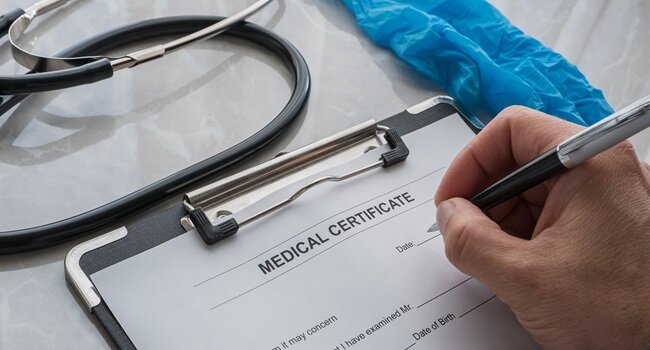Handling patient requests for medical certification requires healthcare providers to navigate several complexities beyond issuing a simple note. People usually request certification for medical leave, an accommodation request, and other purposes like school or legal obligations. Attention to detail, legal knowledge, and a streamlined process ensures both accuracy and patient satisfaction. Below are best practices for managing medical certification requests, helping healthcare providers maintain compliance, adhere to legal guidelines, and foster good faith efforts to meet patient needs while streamlining workflows.
1. Understand the Reason for the Request
It’s essential to know the purpose behind the medical certificate request. Is it related to medical leave, foster care, or an accommodation request (from the Americans with Disabilities Act)? This context helps determine whether issuing medical certification is appropriate. For instance, sick leave, intermittent leave, or an extended medical leave under the Family and Medical Leave Act (FMLA leave) often require medical documentation that reflects the patient’s health condition accurately.
Healthcare providers must ensure that all medical information in the certificate is based on medical evidence, such as a recent medical examination or the patient’s history of medical conditions. Any new medical request should be verified with sufficient certification, ensuring that the patient’s need is valid and supported by appropriate medical facts. Additionally, you can streamline the process by offering digital certificates through secure online platforms. You can offer digital certificates through online platforms, such as a doctor’s note from PDFRun.
2. Verify the Patient’s Identity and Medical History
Before issuing any certificate, healthcare providers must review the patient’s medical records and verify their identity. For first-time requests or if you lack prior knowledge of the patient’s medical condition, an in-person medical examination may be required. Healthcare providers must avoid issuing certificates based solely on verbal claims to protect themselves and maintain ethical standards. Maintaining accurate and detailed medical documentation ensures that any certificate provided aligns with legal standards.
3. Assess the Appropriateness of the Request
Not every medical condition justifies a medical certificate. Providers need to assess the severity and duration of the condition and whether it qualifies for medical leave under the medical leave act. Conditions such as mental impairments, requiring reasonable accommodation under the disabilities act, need specific medical evidence to support requests like sick leave or extended leave.
Healthcare providers should explain the limitations of medical certificates to patients, especially if the condition doesn’t warrant the requested leave. Transparency in discussing the patient’s health condition and medical information will help manage expectations.
4. Follow Legal Guidelines
Healthcare providers must be aware of their region’s legal requirements regarding medical certification. This includes understanding obligations under laws like the and the Equal Employment Opportunity Commission (EEOC) or Health Insurance Portability and Accountability Act (HIPAA). Providers should also familiarize themselves with FMLA leave regulations, including the minimum period for leave and the proper documentation needed for an accommodation request. Using a standardized certification form can help ensure consistency and compliance with local laws, including those governing health insurance or mental impairment.
5. Provide Clear Recovery Time and Recommendations
A thorough medical certificate should clearly outline the patient’s recovery timeline and any recommendations for returning to normal activities. This is particularly important for patients requesting medical leave or intermittent leave under FMLA. Be concise yet clear about the patient’s medical condition, treatment, and recovery to avoid unnecessary follow-ups from employers or schools. Including precise medical documentation not only helps patients but also prevents disputes with employers or other parties regarding the length and validity of the medical leave.
6. Keep a Record of Issued Certificates
Healthcare providers must maintain a record of all issued certificates. This includes tracking the patient’s reason for needing the certificate, the date of issue, and the medical information provided. Securely storing these records helps protect patient privacy and allows providers to quickly reference additional information if needed. Digital systems can assist by automatically saving copies of medical certificates to the patient’s file, reducing the risk of lost documentation and ensuring legal compliance.
7. Communicate the Process to the Patient
It’s essential to communicate the steps involved in obtaining medical certification. Whether it’s an accommodation request, leave request under FMLA, or another need, informing patients of the process, including in-person evaluations and the calendar days it will take to issue the certificate, helps manage expectations and prevents delays.
Final Thoughts

Handling patient requests for medical certification doesn’t have to be complicated, but it does require attention to detail, legal guidelines, and clear communication. Following these steps ensures that healthcare providers issue certificates that are accurate, ethical, and legally compliant. In doing so, healthcare providers can protect themselves from legal risks, streamline operations, and improve patient satisfaction. Issuing a medical certificate is a great opportunity to build trust and a means of ensuring that patients receive the proper documentation needed for sick leave, medical leave, or other accommodations without unnecessary delays.
















